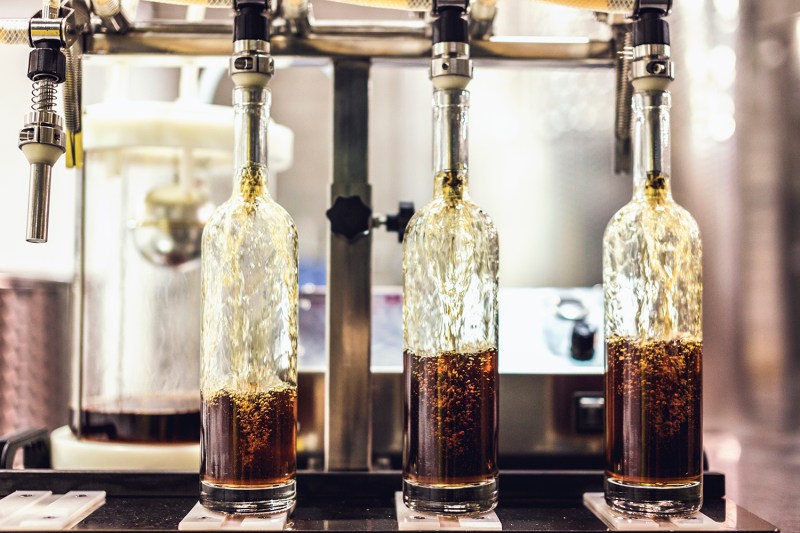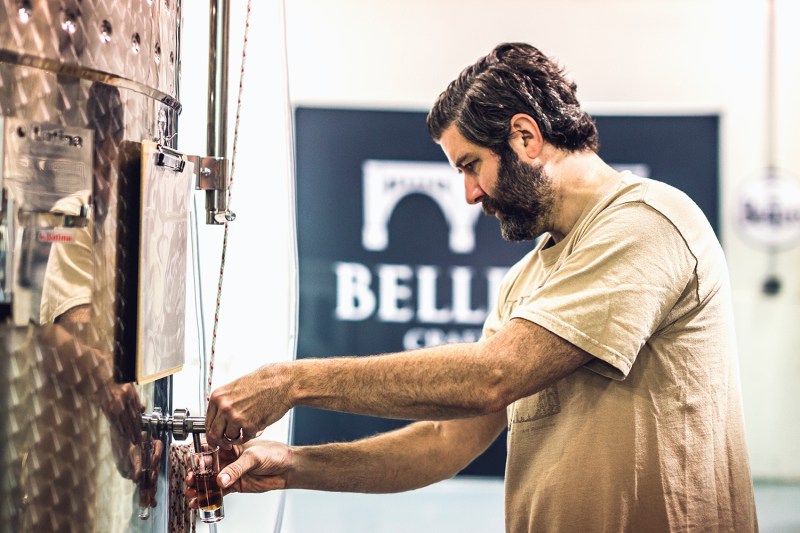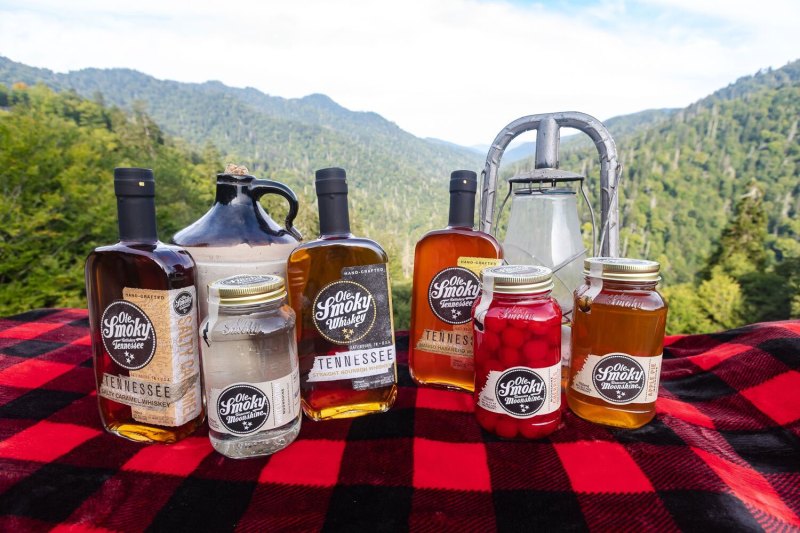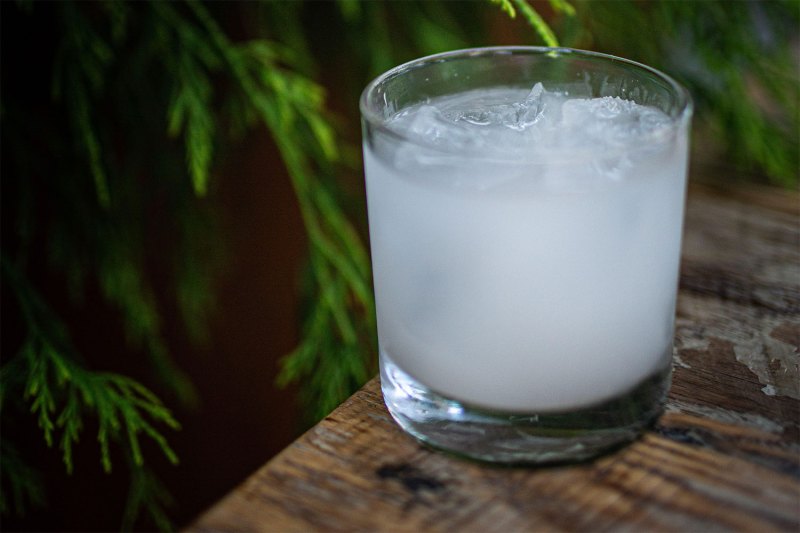
When most people hear “moonshine” they think of super rustic, super potent booze made by amateur distillers in remote rural areas, probably served in a jug marked with three Xs. In other words, this spirit doesn’t typically have a reputation as an artisanal prestige liquor.
However, buying into the pop-cultural concept of moonshine as backwoods swill does you a real disservice. In recent years, craft distillers have taken a sincere interest in moonshine, using time-honored recipes and high-quality ingredients to create versions of this classic American spirit that work beautifully in cocktails, poured over ice, or sipped straight-up.
If you’re curious about this OG of American craft spirits, we’re here to give you all the info you need to start your moonshine journey. We spoke with moonshine distillers and bartenders from across the nation to gather useful tips on how to identify moonshine, where the stigmas around moonshine come from, and why you should ignore them entirely.
What Exactly is Moonshine?
By nature, moonshine proves rather difficult to define. Unlike other whiskies like Scotch and bourbon, moonshine doesn’t adhere to a strict formula of ingredients and methods. However, Merriam-Webster gives us a (almost comically) vague definition of “intoxicating liquor, especially illegally-distilled corn whiskey.”
…thanks, Merr-Webs.
Luckily, experts in the moonshine field can provide a more nuanced explanation of this boozy specialty. Yes, “moonshine” is a deliberately loose category of spirits; Gregg Brooks, director of production and Master of Spirits at Belle Isle Moonshine in Richmond, Virginia, explains that “The jury is still out on [how to define moonshine] because there is no clear definition — at least not yet. Some people believe it depends on the mash bill, most folks think it’s a difference in barrel-aging the spirit, and other traditionalists still hold fast to the idea that moonshine is inherently [just] an illegal, untaxed spirit.”

Of course, many spirits now called “moonshine” are neither illegal nor untaxed. In modern parlance, moonshine tends to refer primarily to whiskies and whiskey-adjacent libations. Specifically, moonshine is “whiskey that has never seen the inside of a barrel. It’s whiskey in its purest form,” says head bartender Mariel Burns of Trademark Taste & Grind in New York City, who works with moonshine on a regular basis. For these reasons, “moonshine” is frequently referred to as “white whiskey.”
Why haven’t liquor markets historically considered moonshine a “serious” spirit?
The current popularity of nostalgic booze and references to old Americana give moonshine a definite cache in the beverage scene, but distilleries hoping to reposition this spirit as a prestige liquor may face an uphill battle, due to old prejudices and stigmas.
“I think, inherently, when a bar patron hears ‘moonshine,’ they immediately think of it being illegally made in the woods, or it being handed to them in a Mason jar at such a high proof that it will remove the taste buds from their tongue,” laments beverage director Josh Gandee of Watershed Distillery in Columbus, Ohio.
“I think that, due to the growing sophistication of the American palate (especially with millennials), there is a strong chance for ‘moonshine’ to become a ‘serious’ spirit.”
However, the determination of some craft distillers to both define and refine the processes used for moonshine production bodes well for the future reputation of this spirit. “I think that, due to the growing sophistication of the American palate (especially with millennials), there is a strong chance for ‘moonshine’ to become a ‘serious’ spirit. The techniques in distillation have grown exponentially over the last 20 years, with new and creative processes emerging. The market for moonshine is [also] very promising due to its versatility [as a] cocktail [ingredient].
“The moonshines available today, such as Catskill Distilling’s Wicked White, are refined and sophisticated blends of all the grains we use at the distillery. It can be used in place of any white spirit, i.e.: in place of tequila in a margarita or rum in a mojito,” insists brand ambassador Peter Grunn of Catskill Distilling Company in Bethel, New York.
How is moonshine making an impression on the craft-spirits world nowadays?
Moonshine’s modern appeal among bartenders and beverage directors largely relies on its versatility. “[Moonshine is] a spirit that can be easily modified [and used to replace other spirits]. It can replace a rum for a rum cocktail; when infused with herbs, it can replace a gin. [When] barrel-aged, it can [even contain] a nice smoky flavor similar to that of an aged whiskey,” director of outlets Ramsey Kashlan of Loews Atlanta Hotel tells us.
In fact, infused versions of moonshine represent the most popular renditions of this spirit; because the white whiskey base doesn’t carry significant flavor on its own (its neutrality bears many similarities to vodka), it’s an ideal candidate for flavor additions. “[Un-aged whiskey gives distillers and bartenders] the latitude to broaden the flavor profile of the spirit with other sugar sources, thus allowing us to make different, new, and amazing distilled-spirit flavors,” explains head bartender Keith Larry of Employees Only in New York City, who frequently creates cocktails based around Saint Luna Moonshine.
What does a moonshine newbie need to know about enjoying this beverage?
When we asked bartenders and distillers for their best advice on how to enjoy moonshine, they unanimously urged bar patrons to set aside their preconceived notions and take a chance on this spirit.

“You can try to sell people on [moonshine] all day long, but it all really goes back to the hands-on experience of people tasting it for the first time. When you take away all of the beautiful packaging and marketing and industry gimmicks, there has to be a truly high-quality product that remains at the core of what you do. More and more consumers these days really care about what goes into the products they purchase and how they are made, [which is why craft-distilled moonshines] resonate with so many of those people. So my advice to the hesitant bar patron is pretty simple: just try it,” Brooks explains.
In terms of specific flavor combinations that particularly suit moonshine, founder Joe Baker of Ole Smoky Distillery in Gatlinburg, Tennessee recommends the use of in-season fruits. “I think moonshine and fruit work really well together. In the summer, my wife Jessi makes a great moonshine lemonade. You can make it by either muddling blackberries with a corn moonshine or [by using a blackberry-infused] moonshine, mixing it with [an equal amount of] fresh lemonade, pouring it over ice, and topping it with fresh mint.”
Looking for some moonshine cocktail recipes to get you started? We’ve got you covered with two formulas designed by pro bartenders:
Moonshine Cocktail Recipes

Kiss the Cook
(Created by Josh Gandee, Watershed Kitchen & Bar)
- 1.5 oz moonshine
- .5 oz sotol
- .5 oz salted butter syrup
- .25 oz dry vermouth
- Peppercorns, for garnish
Method: Combine all ingredients in a mixing glass and stir. Serve over ice in an Old-Fashioned glass and garnish with a bar-spoonful of peppercorns.
White Lightning Negroni
(Created by Mariel Burns, Trademark Taste & Grind)
- 1 oz moonshine
- 1 oz Suze
- 1 oz Martini and Rossi Reserva Ambrato
- 2 dashes orange bitters
Method: Combine ingredients and stir in a rocks glass. Serve with a large ice cube and an orange-peel garnish.



